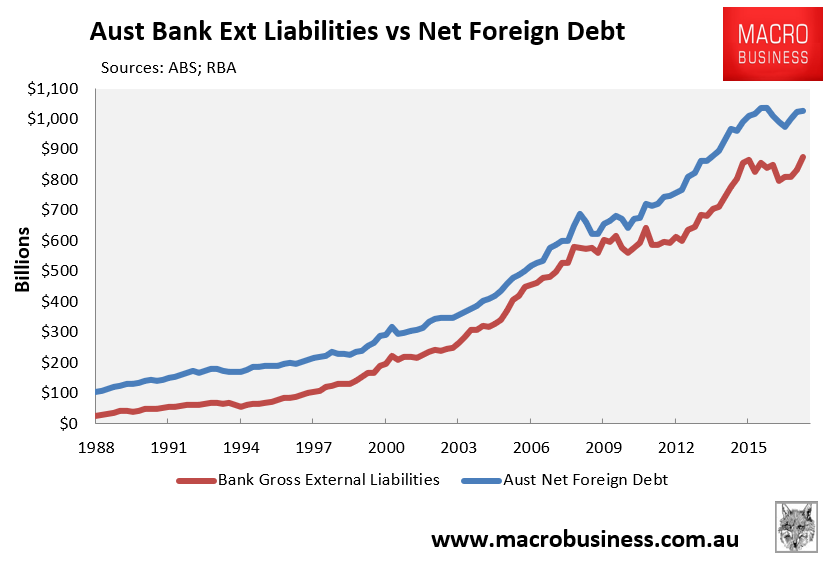For years, MacroBusiness has warned that Australia’s $1 trillion in net foreign debt, driven by the Australian banks’ heavily reliance on offshore borrowings to fund their mortgage books, represents a clear and present danger for the Australian economy.

For example, earlier this month we noted:
Australia’s banks would never have experienced anywhere near the same degree of asset (loan) growth without this tapping of offshore funding markets. Accordingly, the total value of Australian mortgage debt would never have grown so strongly, and Australian house prices would be materially lower as a result.
… the key risk for Australia remains that the banks’ ability to continue borrowing from offshore rests with foreigners’ willingness to continue extending them credit. This willingness will be tested in the event that Australia’s sovereign credit rating is downgraded (automatically downgrading the banks’ credit ratings), there is another global shock, or a sharp deterioration in the Australian economy (raising Australia’s risk premia).
The Federal Budget, too, is now hostage to the banks’ offshore borrowing binge as it cannot borrow to spend on infrastructure or other initiatives for fear that Australia will lose its AAA credit rating, potentially leading to an unraveling of the private debt bubble created by Australia’s banks.
With this background in mind, Economist John Adams and DFA’s Martin North have published an interesting discussion about the risks lurking beneath Australia’s $1 trillion net foreign debt load:
With credit now tightening following the banking royal commission, the whole system will be tested.

